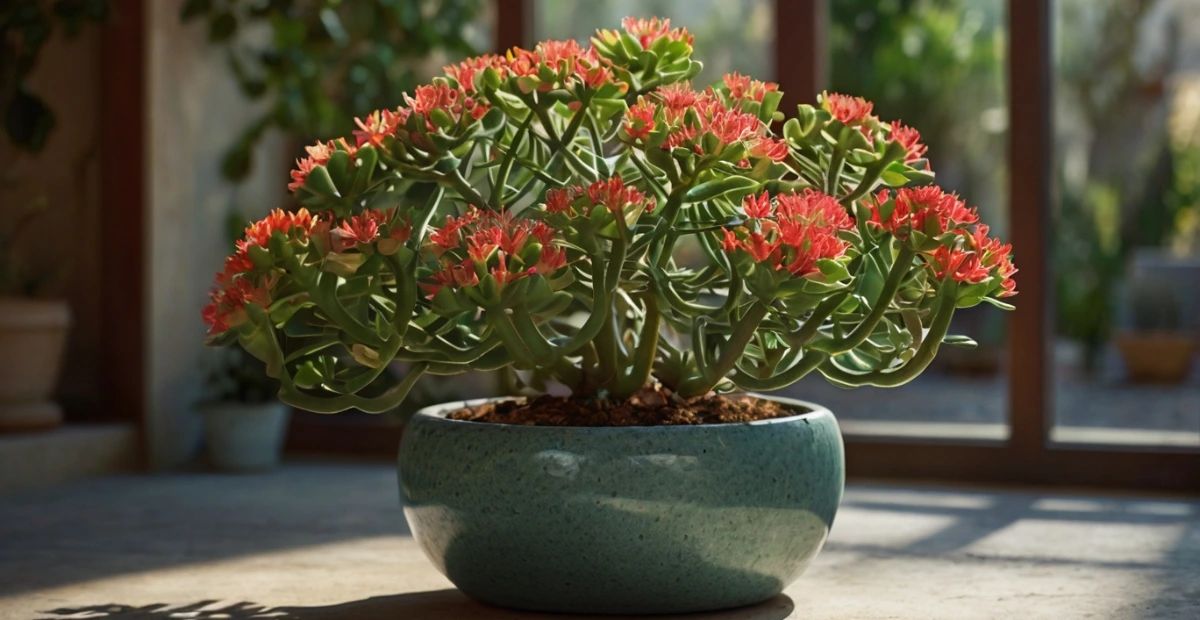Introduction: Discovering the Allure of Euphorbia Plants
Imagine walking through a sun-drenched garden, surrounded by a spectrum of vibrant colors and textures. Amidst the usual collection of flowers, one plant stands out—bold, unusual, and almost otherworldly. That’s the Euphorbia plant for you. With over 2,000 species, Euphorbia plants are among the most fascinating and versatile additions to any garden. Whether you’re an experienced gardener or just starting to explore the world of succulents, Euphorbia varieties can introduce a new level of beauty and uniqueness to your collection.
advertisement
In this guide, you’ll uncover the various types of Euphorbia plants, learn about their unique appeal, and discover why they should be part of your garden. From low-maintenance varieties that thrive in tough conditions to more exotic forms that serve as conversation starters, Euphorbia plants are the perfect choice for gardeners looking to add both charm and resilience to their spaces.
Table of Contents
What Makes Euphorbia Plants Stand Out?
Euphorbia plants have been captivating gardeners for centuries, and it’s not hard to see why. These plants aren’t just typical succulents—they are truly a world of their own. If you’re new to Euphorbias, it’s essential to understand what sets them apart from other plants. Here’s what makes them truly special:
- Diverse Forms: Euphorbia comes in an incredible variety of shapes and sizes, from spiky cacti-like plants to bushy flowering shrubs. Whether you’re interested in dramatic tall forms like the Pencil Cactus or compact, colorful varieties like the Crown of Thorns, Euphorbia offers endless possibilities for every garden space.
- Milky Sap: One distinctive feature of Euphorbia plants is their milky latex sap, which is produced when the plant is damaged. Although it’s toxic to humans and animals, this sap acts as a natural defense mechanism against pests. This quality also adds to the plant’s exotic appeal.
- Adaptability: These plants can thrive in many environments, from desert climates to tropical areas. Some species are even capable of surviving harsh, arid conditions where other plants would struggle. This adaptability makes them ideal for low-maintenance gardeners who want hardy, drought-tolerant plants that still look beautiful.
- Color and Texture: The rich green hues and sometimes vibrant flowers make Euphorbia stand out in any garden. The contrasting textures—from smooth, spiny stems to delicate, colorful blooms—create a visual contrast that adds depth and character to your garden design.
advertisement
Top Euphorbia Plant Varieties You Should Know
When it comes to Euphorbia varieties, you’re spoiled for choice. Each species brings its own unique flair to the garden, and knowing the right one for your space is key. Below, you’ll find a selection of some of the top Euphorbia varieties and what makes them so desirable:
Euphorbia Milii (Crown of Thorns)
- Description: One of the most well-known and widely cultivated varieties, Euphorbia Milii, commonly called Crown of Thorns, boasts vibrant bracts that come in shades of red, pink, yellow, and orange. The thorny stems add a rugged look to this beautiful, compact plant.
- Ideal for: Indoors, especially in containers or small gardens. It thrives in warm, sunny environments and requires minimal water. This makes it perfect for low-maintenance gardens or houseplant enthusiasts.
- Growing Tips:
- Light: Needs plenty of direct sunlight for healthy growth.
- Watering: Water only when the soil feels dry to the touch.
- Pruning: Trim back dead flowers and stems to encourage more blooms.
Euphorbia Tirucalli (Pencil Cactus)
- Description: Often mistaken for a cactus, Euphorbia Tirucalli features tall, slender, pencil-like branches that add dramatic flair to any garden or indoor space. It has a striking appearance, especially when paired with its ability to grow tall.
- Ideal for: Gardeners who want a statement plant. It works best in desert or arid climates but can also be grown indoors in sunny spots.
- Growing Tips:
- Light: Full sun is essential.
- Watering: Water sparingly during the growing season. Be careful not to overwater.
- Care: Avoid direct contact with the plant’s sap, as it can be irritating to the skin.
Euphorbia Polychroma (Sun Spurge)
advertisement
- Description: Known for its bright, chartreuse flowers that bloom in spring, Euphorbia Polychroma adds a pop of color to any garden. It has a bushy, rounded form and is perfect for filling out garden beds and borders.
- Ideal for: Gardeners looking for a hardy, perennial plant with minimal upkeep. This variety thrives in temperate climates.
- Growing Tips:
- Light: Full sun to partial shade works best.
- Watering: Regular watering, but ensure the soil is well-draining.
- Soil: Prefers moderately fertile, well-drained soil.
Euphorbia Amak (Variegated Spurge)
- Description: This variety is celebrated for its striking variegated foliage, which features a combination of green and creamy white leaves. It grows as a compact shrub, making it an excellent choice for containers and small spaces.
- Ideal for: Container gardening, small patios, or as a feature plant in a mixed garden.
- Growing Tips:
- Light: Bright, indirect sunlight.
- Watering: Water when the soil is dry to the touch, but ensure good drainage.
- Pruning: Trim back any leggy growth to keep it compact and full.
The Unique Appeal of Euphorbia Plants
advertisement
Euphorbia plants are not just popular for their looks—they hold emotional and cultural significance as well. From their exotic appearance to their symbolism, Euphorbia varieties have a special place in both traditional and modern gardens.
- Exotic Aesthetic: Their otherworldly appearance makes them stand out in any landscape. The unusual shapes, thorns, and colorful flowers are eye-catching and spark curiosity. If you want a plant that will get your guests talking, Euphorbia is the way to go.
- Symbolism: Euphorbia has various cultural meanings, depending on the species. For instance, the Crown of Thorns is often associated with protection and strength. Other varieties are thought to symbolize life and renewal due to their resilience and vibrant blooms.
- Low-Maintenance: Euphorbia plants are ideal for busy gardeners or those who want to add beauty without spending too much time on upkeep. These hardy plants can withstand droughts, high heat, and poor soil, making them perfect for dry, arid regions or as part of a xeriscaped garden.
- Perfect for Design: Whether used in desert-inspired gardens, tropical landscapes, or as a striking container plant, Euphorbia adds an element of contrast and visual interest. Their ability to complement both modern and naturalistic garden designs makes them highly versatile.
Growing and Caring for Euphorbia Plants
If you’re planning to add a Euphorbia plant to your collection, understanding the basics of its care is crucial for ensuring its health and longevity. Below are some essential tips for growing Euphorbia plants:
advertisement
1. Soil Requirements
Euphorbia plants thrive in well-draining soil. If you’re growing them in containers, make sure the pot has drainage holes to prevent waterlogging. Cactus or succulent mixes are a good choice for most Euphorbia varieties. If planting them in the ground, ensure the soil drains well to avoid root rot.
2. Light Needs
Most Euphorbia varieties require full sun to grow well. However, some species can tolerate partial shade, especially during the hottest part of the day. When growing Euphorbia indoors, place them in a sunny window where they’ll receive at least 6 hours of direct sunlight each day.
3. Watering
Euphorbia plants are drought-tolerant and do best with minimal watering. Overwatering can lead to root rot, so make sure the soil is dry to the touch before watering. During the winter, water even less frequently, as the plant enters a dormant state.
advertisement
4. Temperature and Humidity
Euphorbia plants prefer warm temperatures and low humidity. They can handle high heat, but frost can cause significant damage. If you’re in a region that experiences cold winters, it’s best to grow Euphorbia in containers, so you can bring them indoors when temperatures drop.
5. Pruning and Maintenance
Pruning your Euphorbia plant will keep it healthy and looking its best. Remove any dead or damaged stems and spent flowers to encourage new growth. Always wear gloves when handling Euphorbia, as the milky sap can cause skin irritation.
Euphorbia in Your Garden Design: Ideas and Inspiration
Adding Euphorbia to your garden can transform the space with minimal effort. Whether you’re working with a small balcony or a sprawling backyard, here are some creative ways to incorporate Euphorbia plants into your garden design:
- Xeriscaping: If you live in a dry climate, Euphorbia varieties like the Pencil Cactus and Sun Spurge are ideal for xeriscaping. These plants thrive in drought-prone areas and require little water, making them perfect for water-saving gardens.
- Focal Point: Use larger Euphorbia plants like the Pencil Cactus or Crown of Thorns as a focal point in your garden. Their striking, spiky shapes draw attention and can be placed near walkways, entrances, or patios to create a statement.
- Contrasting Plant Pairings: Euphorbia pairs well with plants that have contrasting textures, such as soft-leaved succulents or spiny cacti. Create dynamic visual interest by combining Euphorbia with plants that complement its unique form and color.
- Containers and Pots: Many Euphorbia varieties are perfect for container gardening. Whether placed on a balcony, porch, or windowsill, they add a touch of elegance and drama to any space.
advertisement
FAQs About Euphorbia Plants
1. What are Euphorbia plants used for?
- Euphorbia plants are used primarily for ornamental purposes in gardens, landscapes, and containers. Some varieties have medicinal properties, but they should be handled with care due to their toxic sap.
2. Are Euphorbia plants poisonous?
- Yes, most Euphorbia species produce a milky sap that can cause irritation to the skin and is toxic if ingested. Always handle them with gloves and keep them out of reach of pets and children.
3. Can Euphorbia be grown indoors?
- Absolutely! Many Euphorbia varieties, like the Crown of Thorns, make excellent indoor plants. They thrive in bright, sunny windows and are relatively low-maintenance.
4. How fast do Euphorbia plants grow?
- Growth rates vary depending on the species. Some varieties, like the Pencil Cactus, grow quickly, while others, like the Sun Spurge, grow more slowly. Overall, Euphorbia plants are not high-maintenance and can thrive for many years with minimal care.
5. How do I propagate Euphorbia plants?
- Propagating Euphorbia plants is typically done through stem cuttings. Allow the cuttings to callus over before planting them in well-draining soil.
Conclusion: Why You Should Consider Euphorbia Plants for Your Garden
Euphorbia plants are an excellent addition to any garden. Their bold forms, vibrant colors, and low-maintenance nature make them the perfect choice for both beginner and experienced gardeners. Whether you’re looking to add a striking feature to your landscape or simply want a resilient plant that can handle the heat, Euphorbia is a great choice. So why not start growing your own Euphorbia today? Explore the variety of species available, and transform your garden into an exotic oasis.
advertisement
By following this comprehensive guide, you now have everything you need to make an informed decision on which Euphorbia varieties to grow. Don’t hesitate to bring these unique plants into your garden and experience their beauty for yourself!


